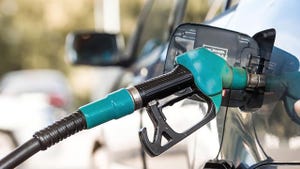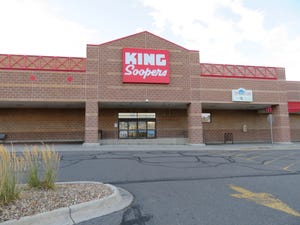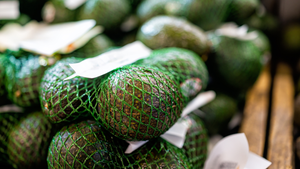Buehler's Takes Enthusiasm for Energy Conservation to ShoppersBuehler's Takes Enthusiasm for Energy Conservation to Shoppers
When it comes to energy conservation, Buehler's is on a mission. Scott Buehler, vice president of real estate and store development, told SN the Wooster, Ohio, retailer looks for how to save energy in hundreds of subtle, scrupulous ways. Buehler's is now broadcasting its energy savings message to its customers and urging them to take similar steps. The retailer has worked hard to earn the U.S. Envir-onmental
February 4, 2008
LIZ PARKS
When it comes to energy conservation, Buehler's is on a mission.
Scott Buehler, vice president of real estate and store development, told SN the Wooster, Ohio, retailer looks for how to save energy in “hundreds of subtle, scrupulous ways.” Buehler's is now broadcasting its energy savings message to its customers and urging them to take similar steps.
The retailer has worked hard to earn the U.S. Envir-onmental Protection Agency's Energy Star certification for its 11 older stores. Two more stores are expected to get certified in 2009, after posting a 12-month record of consistent energy savings.
For a store to qualify for Energy Star recognition, retailers must independently validate that it scores in the top 25% on the EPA's energy performance rating system. In fact, all but one of Buehler's 11 Energy Star stores achieved a rating of 93% or above. Energy Star-qualified buildings generally use up to 40% less energy than typical buildings.
In achieving Energy Star certification, “we looked at the consumption of heat, water, gas, air recovery, anything that had to do with the building's energy efficiency,” said Becky Foster, Buehler's director of construction and maintenance. “Then we had our energy usage in each store verified by professional energy consultants.”
According to Buehler's, management has been conserving since 1929, when the company's founders, Ed and Helen Buehler, opened the first Buehler's supermarket. “Sustainability has always been on our minds, but in the past two to three years we've become more active and involved,” said Buehler, who is a member of the Food Marketing Institute's Sustainability Task Force, formed last year. Buehler's formed its own Sustainability Task Force in mid-2007.
Lighting is one of the biggest focuses of Buehler's energy efforts. At its newest store in Jackson Township, Ohio, opened last May, Buehler's installed skylights and a light-processing system that dims the fluorescent lights whenever sufficient sunlight is coming through the skylights.
Buehler's is still testing the light-processing system, said Foster, and will wait to see the degree of energy savings before deciding whether to roll out the system to other stores. “It's too new right now for us to have consistent, true data,” she said. “But we feel optimistic that there are energy savings there even though we don't have the sunshine ratings of a state like California.”
To further conserve energy, Buehler's is purchasing refrigerator and frozen-food door cases lit with light-emitting diode (LED) lights rather then fluorescent lights. Three stores currently have LED refrigeration lights for meat, seafood and general frozen-food cases, two have LED lights in their bakeries and two more bakeries will receive LED lights this year. Foster said LED lighting has been made “the standard for when we replace cases or open new stores.”
LEDs are more energy-efficient and require less maintenance than fluorescent lights, said Foster. “There is about a 10-year span where LEDs require no maintenance. They also work extremely well in cold temperatures. And the light input is excellent so the customers can really see the true colors of the foods. In that sense, they are merchandising tools as well.” Buehler's is also using LED lights for its outside signs.
As an experiment, Buehler's is testing fiber-optic lighting in one store, in one door of a frozen-meat case. The source for the fiber-optic lighting is on top of the case, not in the case.
Fiber-optic lighting is not rated as highly as LED in terms of energy savings, according to Foster. But she noted that at Buehler's, “we like to test things and gather our own data to help us form opinions. Two to three years from now, the fiber-optic technology will probably evolve just as the technology for LED has evolved, and we'll be ready for it.”
Buehler has also installed motion detectors on lights in all bathrooms in its stores, distribution center and corporate headquarters. “That's an easy and inexpensive way to save energy,” said Foster.
This year, Buehler's plans to replace all the lighting in its warehouse with six lamp T8 fixtures that use motion detectors in each aisle. “If no one is in an aisle, the lighting will be off,” said Foster. Buehler's is projecting a 1.7-year payback on that initiative, which Foster said “is pretty good.”
OTHER STRATEGIES
Buehler's has many other energy programs. In two stores with the highest energy costs, the retailer this year will install a Lexan Anti-Fog Freezer film, made of polycarbonate, on its frozen-food cases. “That will reduce the fogging when we open up the door and it will allow us to shut off one of the electric heat strips that go around each door to help conserve on energy costs,” said Buehler. The retailer will eventually put the Lexan film on cases in all stores as capital allows.
The company also uses no-touch faucets for saving water. And it employs hot-water recovery from refrigerator racks in every store. “We use it in the bakeries and the kitchen, and to divert heat into our stores,” said Foster.
The retailer has established best practices for maximizing fuel efficiency in delivery and transportation vehicles. For example, with its distribution center about a 30-minute drive north of the Pennsylvania Amish country, Buehler's is buying more and more local produce from Amish suppliers. “That's another sustainability initiative,” said Buehler. “It saves us fuel and helps the local economy, and that's been really good for us.”
In its current sustainability program, Buehler's is recycling its cooking grease by selling it to fuel manufacturers.
Foster said that some of the initiatives now under consideration include working with vendors to develop more eco-friendly packaging and products, and working with the company's executive chef on developing and testing a compost program using waste foods from Buehler's in-store restaurants.
Buehler's efforts also extend to their customers, for whom Buehler's now provides an affordable alternative to plastic and paper bags in the form of store-branded reusable bags that retail for 99 cents and insulated reusable bags, just introduced, that retail for $1.99.
The retailer also places plastic-bag bins at the entrance of each store for easy recycling, and it recently put plastic bins outside its corporate offices so corporate employees can start recycling their plastic bags.
Buehler's is also testing a program for recycling soft drink and water bottles at the store level and hopes to roll that program out this year.
This spring, Buehler's plans to launch an advertising campaign that will focus on “the greener side of Buehler's,” said Foster. “Maybe one week we would say how much we have recycled to date or how much heat we have saved by converting waste heat to hot water. In addition, weekly tips will be offered to customers so we can educate our customers each week in something that they can do in their homes and businesses to save energy.”
Buehler's Greener Side
| 16,817,220 | gallons of water |
| 10,090,332 | kilowatt hours of energy |
| 985,008 | gallons of fuel |
| 144,147 | pounds of air particulates |
| 40,841 | trees |
| 8,168 | cubic yards of landfill |
| Source: Buehler's | |
About the Author
You May Also Like




